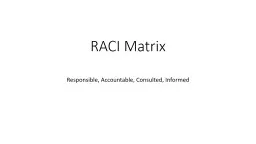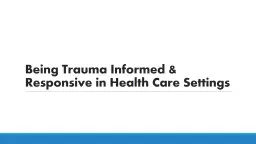PDF-Informed Design
Author : molly | Published Date : 2021-10-01
TraumaHow the Physical Environment Supports Recovery from Homelessness What is TraumaIndividual trauma results from an EVENT series of events or set of circumstances
Presentation Embed Code
Download Presentation
Download Presentation The PPT/PDF document "Informed Design" is the property of its rightful owner. Permission is granted to download and print the materials on this website for personal, non-commercial use only, and to display it on your personal computer provided you do not modify the materials and that you retain all copyright notices contained in the materials. By downloading content from our website, you accept the terms of this agreement.
Informed Design: Transcript
Download Rules Of Document
"Informed Design"The content belongs to its owner. You may download and print it for personal use, without modification, and keep all copyright notices. By downloading, you agree to these terms.
Related Documents














